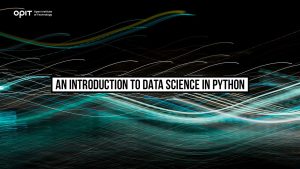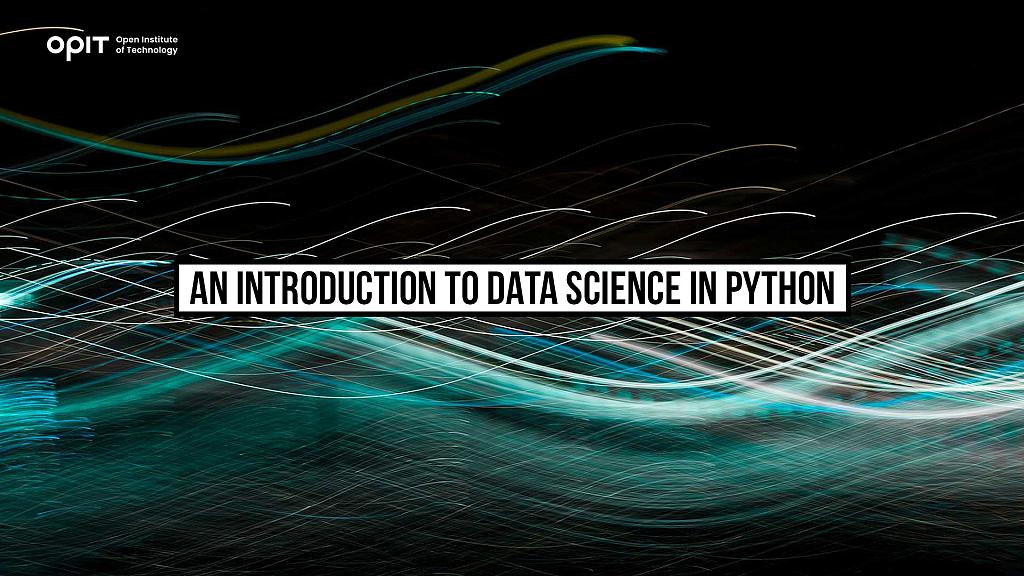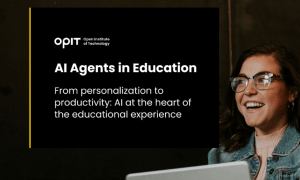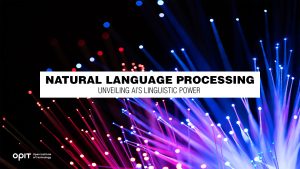

Recommender systems are AI-based algorithms that use different information to recommend products to customers. We can say that recommender systems are a subtype of machine learning because the algorithms “learn from their past,” i.e., use past data to predict the future.
Today, we’re exposed to vast amounts of information. The internet is overflowing with data on virtually any topic. Recommender systems are like filters that analyze the data and offer the users (you) only relevant information. Since what’s relevant to you may not interest someone else, these systems use unique criteria to provide the best results to everyone.
In this article, we’ll dig deep into recommender systems and discuss their types, applications, and challenges.
Types of Recommender Systems
Learning more about the types of recommender systems will help you understand their purpose.
Content-Based Filtering
With content-based filtering, it’s all about the features of a particular item. Algorithms pick up on specific characteristics to recommend a similar item to the user (you). Of course, the starting point is your previous actions and/or feedback.
Sounds too abstract, doesn’t it? Let’s explain it through a real-life example: movies. Suppose you’ve subscribed to a streaming platform and watched The Notebook (a romance/drama starring Ryan Gosling and Rachel McAdams). Algorithms will sniff around to investigate this movie’s properties:
- Genre
- Actors
- Reviews
- Title
Then, algorithms will suggest what to watch next and display movies with similar features. For example, you may find A Walk to Remember on your list (because it belongs to the same genre and is based on a book by the same author). But you may also see La La Land on the list (although it’s not the same genre and isn’t based on a book, it stars Ryan Gosling).
Some of the advantages of this type are:
- It only needs data from a specific user, not a whole group.
- It’s ideal for those who have interests that don’t fall into the mainstream category.
A potential drawback is:
- It recommends only similar items, so users can’t really expand their interests.
Collaborative Filtering
In this case, users’ preferences and past behaviors “collaborate” with one another, and algorithms use these similarities to recommend items. We have two types of collaborative filtering: user-user and item-item.
User-User Collaborative Filtering
The main idea behind this type of recommender system is that people with similar interests and past purchases are likely to make similar selections in the future. Unlike the previous type, the focus here isn’t just on only one user but a whole group.
Collaborative filtering is popular in e-commerce, with a famous example being Amazon. It analyzes the customers’ profiles and reviews and offers recommended products using that data.
The main advantages of user-user collaborative filtering are:
- It allows users to explore new interests and stay in the loop with trends.
- It doesn’t need information about the specific characteristics of an item.
The biggest disadvantage is:
- It can be overwhelmed by data volume and offer poor results.
Item-Item Collaborative Filtering
If you were ever wondering how Amazon knows you want a mint green protective case for the phone you just ordered, the answer is item-item collaborative filtering. Amazon invented this type of filtering back in 1998. With it, the e-commerce platform can make quick product suggestions and let users purchase them with ease. Here, the focus isn’t on similarities between users but between products.
Some of the advantages of item-item collaborative filtering are:
- It doesn’t require information about the user.
- It encourages users to purchase more products.
The main drawback is:
- It can suffer from a decrease in performance when there’s a vast amount of data.
Hybrid Recommender Systems
As we’ve seen, both collaborative and content-based filtering have their advantages and drawbacks. Experts designed hybrid recommender systems that grab the best of both worlds. They overcome the problems behind collaborative and content-based filtering and offer better performance.
With hybrid recommender systems, algorithms take into account different factors:
- Users’ preferences
- Users’ past purchases
- Users’ product ratings
- Similarities between items
- Current trends
A classic example of a hybrid recommender system is Netflix. Here, you’ll see the recommended content based on the TV shows and movies you’ve already watched. You can also discover content that users with similar interests enjoy and can see what’s trending at the moment.
The biggest strong points of this system are:
- It offers precise and personalized recommendations.
- It doesn’t have cold-start problems (poor performance due to lack of information).
The main drawback is:
- It’s highly complex.
Machine Learning Techniques in Recommender Systems
It’s fair to say that machine learning is like the foundation stone of recommender systems. This sub-type of artificial intelligence (AI) represents the process of computers generating knowledge from data. We understand the “machine” part, but what does “learning” implicate? “Learning” means that machines improve their performance and enhance capabilities as they learn more information and become more “experienced.”
The four machine learning techniques recommender systems love are:
- Supervised learning
- Unsupervised learning
- Reinforcement learning
- Deep learning
Supervised Learning
In this case, algorithms feed off past data to predict the future. To do that, algorithms need to know what they’re looking for in the data and what the target is. The data in which we know the target label are named labeled datasets, and they teach algorithms how to classify data or make predictions.
Supervised learning has found its place in recommender systems because it helps understand patterns and offers valuable recommendations to users. It analyzes the users’ past behavior to predict their future. Plus, supervised learning can handle large amounts of data.
The most obvious drawback of supervised learning is that it requires human involvement, and training machines to make predictions is no walk in the park. There’s also the issue of result accuracy. Whether or not the results will be accurate largely depends on the input and target values.
Unsupervised Learning
With unsupervised learning, there’s no need to “train” machines on what to look for in datasets. Instead, the machines analyze the information to discover hidden patterns or similar features. In other words, you can sit back and relax while the algorithms do their magic. There’s no need to worry about inputs and target values, and that is one of the best things about unsupervised learning.
How does this machine learning technique fit into recommender systems? The main application is exploration. With unsupervised learning, you can discover trends and patterns you didn’t even know existed. It can discover surprising similarities and differences between users and their online behavior. Simply put, unsupervised learning can perfect your recommendation strategies and make them more precise and personal.
Reinforcement Learning
Reinforcement learning is another technique used in recommender systems. It functions like a reward-punishment system, where the machine has a goal that it needs to achieve through a series of steps. The machine will try a strategy, receive back, change the strategy as necessary, and try again until it reaches the goal and gets a reward.
The most basic example of reinforcement learning in recommender systems is movie recommendations. In this case, the “reward” would be the user giving a five-star rating to the recommended movie.
Deep Learning
Deep learning is one of the most advanced (and most fascinating) subcategories of AI. The main idea behind deep learning is building neural networks that mimic and function similarly to human brains. Machines that feature this technology can learn new information and draw their own conclusions without any human assistance.
Thanks to this, deep learning offers fine-tuned suggestions to users, enhances their satisfaction, and ultimately leads to higher profits for companies that use it.
Challenges and Future Trends in Recommender Systems
Although we may not realize it, recommender systems are the driving force of online purchases and content streaming. Without them, we wouldn’t be able to discover amazing TV shows, movies, songs, and products that make our lives better, simpler, and more enjoyable.
Without a doubt, the internet would look very different if it wasn’t for recommender systems. But as you may have noticed, what you see as recommended isn’t always what you want, need, or like. In fact, the recommendations can be so wrong that you may be shocked how the internet could misinterpret you like that. Recommender systems aren’t perfect (at least not yet), and they face different challenges that affect their performance:
- Data sparsity and scalability – If users don’t leave a trace online (don’t review items), the machines don’t have enough data to analyze and make recommendations. Likewise, the datasets change and grow constantly, which can also represent an issue.
- Cold start problem – When new users become a part of a system, they may not receive relevant recommendations because algorithms don’t “know” their preferences, past purchases, or ratings. The same goes for new items introduced to a system.
- Privacy and security concerns – Privacy and security are always at the spotlight of recommender systems. The situation is a paradox. The more a system knows about you, the better recommendations you’ll get. At the same time, you may not be willing to let a system learn your personal information if you want to maintain your privacy. But then, you won’t enjoy great recommendations.
- Incorporating contextual information – Besides “typical” information, other data can help make more precise and relevant recommendations. The problem is how to incorporate them.
- Explainability and trust – Can a recommender system explain why it made a certain recommendation, and can you trust it?
Discover New Worlds with Recommender Systems
Recommender systems are growing smarter by the day, thanks to machine learning and technological advancements. The recommendations were introduced to allow us to save time and find exactly what we’re looking for in a jiff. At the same time, they let us experiment and try something different.
While recommender systems have come a long way, there’s still more than enough room for further development.
Related posts

Source:
- Times of Malta, published on September 18th, 2025
4 min read
The gathering brought together academics and technology leaders from prominent European Institutions, such as Instituto de Empresa (IE University), OPIT itself and the Royal College of Arts, to explore how artificial intelligence is reshaping the university experience.
The OPIT AI Copilot has been trained on the institute’s complete academic archive, a collection created over the past three years that includes 131 courses, more than 3,500 hours of recorded lectures, 7,500 study resources, 320 certified assessments, and thousands of exercises and original learning documents.
Unlike generic AI tools, the Copilot is deeply integrated with OPIT’s learning management system, allowing it to track each student’s progress and provide tailored support.
This integration means the assistant can reference relevant sources within the learning environment, adapt to the student’s stage of study, and ensure that unreleased course content remains inaccessible.
A mobile app is also scheduled for release this autumn, that will allow students to download exercise and access other tools.
During examinations, the Copilot automatically switches to what the institute calls an “anti-cheating mode”, restricting itself to general research support rather than providing direct answers.
For OPIT’s international community of 500 students from nearly 100 countries, many of whom balance studies with full-time work, the ability to access personalised assistance at any time of day is a key advantage.
“Eighty-five per cent of students are already using large language models in some way to study,” said OPIT founder and director Riccardo Ocleppo. “We wanted to go further by creating a solution tailored to our own community, reflecting the real experiences of remote learners and working professionals.”
Tool aims to cut correction time by 30%
The Copilot will also reduce administrative burdens for faculty. It can help grade assignments, generate new educational materials, and create rubrics that allow teachers to cut correction time by as much as 30 per cent.
According to OPIT, this will free up staff to dedicate more time to teaching and direct student engagement.
At the Milan event, Rector Francesco Profumo underlined the broader implications of AI in higher education. “We are in the midst of a deep transformation, where AI is no longer just a tool: it is an environment that radically changes how we learn, teach, and create,” he said.
“But it is not a shortcut. It is a cultural, ethical, and pedagogical challenge, and to meet it we must have the courage to rethink traditional models and build bridges between human and artificial intelligence.”
OPIT was joined on stage by representatives from other leading institutions, including Danielle Barrios O’Neill of the Royal College of Art, who spoke about the role of AI in art and creativity, and Francisco Machin of IE University, who discussed applications in business and management education.
OPIT student Asya Mantovani, also employed at a leading technology and consulting firm in Italy, gave a first-hand account of balancing professional life with online study.
The assistant has been in development for the past eight months, involving a team of OPIT professors, researchers, and engineers.
Ocleppo stressed that OPIT intends to make its AI innovations available beyond its own institution. “We want to put technology at the service of higher education,” he said.
“Our goal is to develop solutions not only for our own students, but also to share with global institutions eager to innovate the learning experience in a future that is approaching very quickly.”

From personalization to productivity: AI at the heart of the educational experience.
Click this link to read and download the e-book.
At its core, teaching is a simple endeavour. The experienced and learned pass on their knowledge and wisdom to new generations. Nothing has changed in that regard. What has changed is how new technologies emerge to facilitate that passing on of knowledge. The printing press, computers, the internet – all have transformed how educators teach and how students learn.
Artificial intelligence (AI) is the next game-changer in the educational space.
Specifically, AI agents have emerged as tools that utilize all of AI’s core strengths, such as data gathering and analysis, pattern identification, and information condensing. Those strengths have been refined, first into simple chatbots capable of providing answers, and now into agents capable of adapting how they learn and adjusting to the environment in which they’re placed. This adaptability, in particular, makes AI agents vital in the educational realm.
The reasons why are simple. AI agents can collect, analyse, and condense massive amounts of educational material across multiple subject areas. More importantly, they can deliver that information to students while observing how the students engage with the material presented. Those observations open the door for tweaks. An AI agent learns alongside their student. Only, the agent’s learning focuses on how it can adapt its delivery to account for a student’s strengths, weaknesses, interests, and existing knowledge.
Think of an AI agent like having a tutor – one who eschews set lesson plans in favour of an adaptive approach designed and tweaked constantly for each specific student.
In this eBook, the Open Institute of Technology (OPIT) will take you on a journey through the world of AI agents as they pertain to education. You will learn what these agents are, how they work, and what they’re capable of achieving in the educational sector. We also explore best practices and key approaches, focusing on how educators can use AI agents to the benefit of their students. Finally, we will discuss other AI tools that both complement and enhance an AI agent’s capabilities, ensuring you deliver the best possible educational experience to your students.
Have questions?
Visit our FAQ page or get in touch with us!
Write us at +39 335 576 0263
Get in touch at hello@opit.com
Talk to one of our Study Advisors
We are international
We can speak in:

